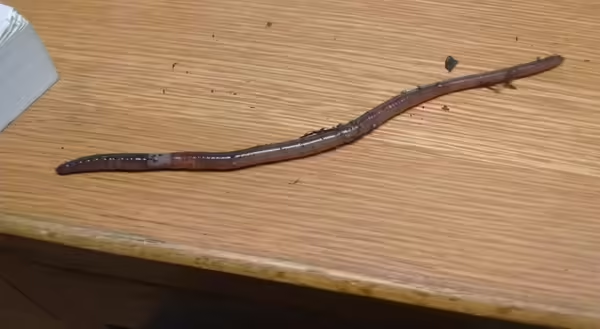
Want to know when new topics post here? Subscribe to Over the Garden Fence emails.
Jumping worm update
Jumping worms continue to be confirmed statewide, and late summer into fall is an easy time to spot those big worms, if you have them in your home landscape. The most recent map now confirms this invasive worm in 32 counties and another six are suspected. That is a big increase from just a few months back with 22 confirmations and five suspected. While the jumping worm can do real damage in natural areas, long-term concerns in urban settings is still unknown. Currently there are no recommendations on controlling jumping worms. The best management practice is being aware of them and slowing the spread with good gardening practices.
Late summer weather
Typical weather patterns for this time of year are leaving us with a lot of dew in the mornings now, which promotes foliage issues on many plants. The one that is easy to spot is powdery mildew. This can occur on healthy and declining leaves on our shrubs and flowers and even the lawn. Powdery mildew is not a disease that needs to be controlled, especially this time of year. Related to the dew, remember to wait until the lawn is dry before mowing. The mower is more effective at cutting up the grass blade into tiny pieces, and dry grass will not build up inside the mower deck like wet grass will.
Premature fall color
Our summer stressors, like high heat and dry weather, have set up conditions where we are seeing some early fall color. Newly planted trees and shrubs also may exhibit early fall color as they are still working through transplanting shock. Additionally, plants that have mechanical damage (mower or string trimmer) also are stressed and may be impacted.
Early foliage loss
All our shallow rooted trees, such as birch, elder, and willow, are losing some foliage as a defense against a lack of soil moisture. This will occur even without the heat we have been experiencing. Late summer and early fall watering of the area just inside to outside the drip line is the remedy. Using the open hose at a slow rate of flow is one easy way to provide the needed soil moisture. Drip hoses need to be left on for several hours to get the volume of water needed.
Continue to harvest
Vegetable gardens this time of year can begin to look pretty ragged, as early plantings have begun to fade; yet there can be plenty to harvest still. Tomatoes and peppers prefer cooler weather to ensure fruit production, so you may actually see an increase as our temperatures moderate. Vine crops certainly are getting leggy, and those early leaves are giving up. The cucumbers and squash taste as good as ever. If fall cabbages have been planted, keep an eye out for the cabbage worms and treat accordingly.
Learn more about Illinois invasive species.
Need gardening advice? Our Master Gardener Help Desks in DuPage, Kane, and Kendall counties take questions via email, phone, or in-person visit. Learn more here.
About the author: Richard Hentschel’s expertise extends across several subject areas with specialties in lawn care, fruit tree production, woody ornamentals, and home and community gardening. During his 45-year career in horticulture and agriculture, Hentschel became a well-known and respected expert for commercial and homeowner audiences, industry organizations, and media. He retired from University of Illinois Extension in April 2022 with nearly 30 years of service as a Horticulture Specialist and Educator in northern Illinois.